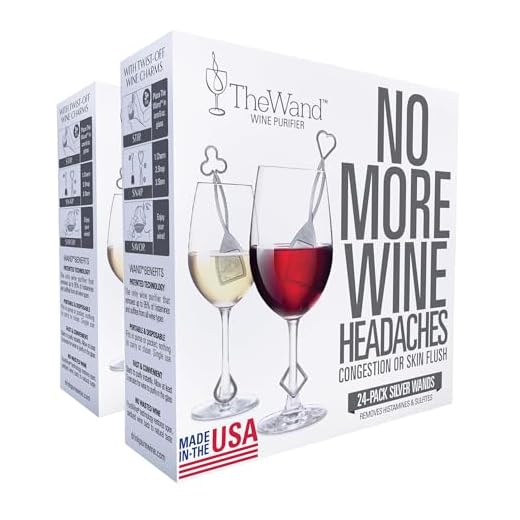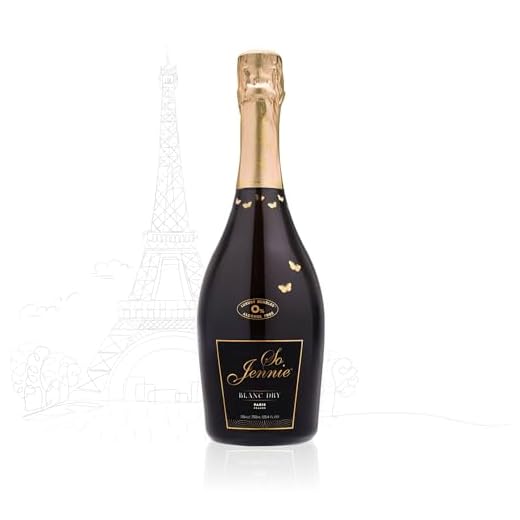



It’s essential to recognize that the majority of fermented grape beverages, including those made from light-hued grapes, typically have added preservatives to maintain freshness and prevent spoilage. These preservatives, commonly referred to as sulfites, play a significant role in the winemaking process.
For those concerned about sulfite levels, it’s important to note that many bottles will indicate the presence of these compounds on the label. Regulatory standards often require any beverage containing more than 10 parts per million to disclose this information. Therefore, if you’re sensitive to sulfites or simply wish to avoid them, always check the label before making a purchase.
In my experience, while some individuals report adverse reactions, the vast majority can enjoy these beverages without issues. If you’re among those who do experience sensitivity, opting for organic varieties may be beneficial, as they usually have minimal or no added preservatives. Exploring different options can lead to delightful discoveries and ensure a satisfying experience with every sip.
White Varietals and Additives
In many cases, these light beverages include preservatives, often referred to as potassium metabisulfite or sodium bisulfite. Their primary role is to prevent oxidation and maintain freshness. It’s common for producers to add them during fermentation or bottling to enhance stability.
For those sensitive to additives, it’s crucial to check labels. The majority of bottles will indicate the presence of these compounds. While some artisanal producers opt for minimal intervention methods, many commercial brands utilize these agents to ensure product consistency and longevity.
When exploring options, consider organic alternatives. These selections typically have lower levels of additives, appealing to those seeking a more natural tasting experience. However, even organic varieties may still contain trace amounts, so thorough research is advisable.
It’s also worth noting that the perception of taste can be influenced by the presence of these substances. Some individuals may notice a difference in flavor profile, particularly if they are accustomed to wines made without synthetic preservatives.
As you expand your palate, don’t hesitate to ask staff at wine shops or restaurants about the production methods used for specific bottles. This knowledge can greatly enhance your appreciation and enjoyment of your chosen varietals.
Understanding Sulfites in White Wine
For those who seek a clearer understanding, it’s crucial to recognize that many of these beverages naturally contain sulfites due to the fermentation process. In addition, winemakers often add them to preserve freshness and enhance stability. If you’re particularly sensitive to these compounds, opting for organic options can be beneficial, as they typically have lower levels.
It’s essential to read labels carefully. Many producers are required to disclose the presence of added sulfites, especially if levels exceed 10 parts per million. If you experience discomfort after consuming, consider keeping a journal of your experiences to identify any patterns related to specific brands or types.
Interestingly, certain varietals tend to have higher concentrations than others. For instance, sweeter styles may have more due to their preservation needs. If your palate prefers something less intense, consider trying drier counterparts. Always remember to serve chilled, as temperature can influence perception and enhance enjoyment.
When pairing with food, consider the acidity and sweetness levels, as these factors can mitigate the impact of sulfites. Foods rich in antioxidants, such as fruits and vegetables, may also help balance the overall experience. Exploring different regions can reveal unique profiles, providing a delightful journey through flavors while being mindful of your sensitivities.
How Sulfites Affect the Flavor of White Wine
When I assess the impact of these compounds on flavor, it becomes clear that their presence can enhance the overall profile of a beverage. They act as preservatives, preventing oxidation and allowing the more delicate fruity and floral notes to shine through. Without sufficient levels, wines can quickly degrade, losing their intended character and complexity.
Moreover, the balance between acidity and sweetness is crucial. Sulfites can help stabilize these elements, ensuring that flavors remain intact over time. This stabilization contributes to a more harmonious tasting experience, allowing the drinker to appreciate the nuanced layers that might otherwise be overshadowed.
However, it’s essential to consider the variety in taste profiles based on the amount used. Lower levels might result in a fresher and crisper sensation, while higher concentrations can sometimes impart a slightly different texture, enhancing the body of the liquid. Understanding this balance can lead to better pairings with food, as the right levels can complement or contrast with various dishes effectively.
| Flavors Affected | Effect of Sulfites |
|---|---|
| Fruity Notes | Enhanced brightness and clarity |
| Floral Aromas | Preserved freshness |
| Acidity | Stabilization and balance |
| Overall Complexity | Increased depth and richness |
Ultimately, my experience shows that the strategic use of these compounds can elevate the tasting experience, helping to maintain the integrity of flavors and aromas, which is essential for any enthusiast looking to fully appreciate their glass. Remember, the key lies in finding the right balance that suits both the beverage and the accompanying dishes.
Identifying Sulfite Levels in Different Types of White Wine
To accurately assess the concentration of these compounds in various styles of this beverage, refer to the label. Wines labeled as “organic” typically have lower levels, while “biodynamic” selections often contain minimal amounts. Look for producers who specify low or no added preservatives; they may provide transparency regarding their practices.
Regions also play a significant role in determining these levels. For example, wines from cooler climates tend to have higher acidity, which can naturally reduce the need for added preservatives. In contrast, warmer regions may require more intervention due to accelerated fermentation processes.
Another practical approach is to familiarize yourself with specific varietals. For instance, Chardonnay and Sauvignon Blanc often exhibit varying levels of these compounds based on winemaking techniques. Those crafted using malolactic fermentation may have different profiles compared to those that are fermented in stainless steel.
Lastly, consider the vintage. Older selections might exhibit higher concentrations due to aging processes and previous winemaking decisions. Engaging with knowledgeable staff at a local shop or winery can enhance your understanding and help you make informed choices.
Health Implications of Sulfites in White Wine
Individuals with asthma or sulfite sensitivity should limit their intake of products containing these compounds, as they can trigger respiratory issues. Symptoms may include wheezing, hives, or difficulty breathing. Consulting with a healthcare professional is advisable if you suspect sensitivity.
Potential Reactions
- Asthmatics may experience exacerbated symptoms.
- Skin reactions like rashes or hives can occur in sensitive individuals.
- Headaches may be reported after consumption, although research is inconclusive.
Moderation and Recommendations
For those without sensitivity, moderate consumption is generally considered safe. Opting for organic varieties can be a good choice, as they typically have lower levels of added preservatives. Always check labels if you’re concerned about levels.
For outdoor enthusiasts who need reliable energy sources when enjoying their favorite beverages, consider the best solar generators for power tools to enhance your experience.
Labeling Regulations for Sulfites in Wine Products
All producers must comply with specific labeling guidelines when it comes to wine products. The inclusion of sulfites must be clearly indicated on the bottle if their concentration exceeds 10 parts per million (ppm). This regulation ensures that consumers are informed about the presence of these compounds, which some individuals may be sensitive to.
- The phrase “Contains Sulfites” must appear on the label, typically in a prominent location.
- Labels should also adhere to the standards set by the Alcohol and Tobacco Tax and Trade Bureau (TTB) in the United States, which mandates accurate ingredient disclosure.
- European Union regulations similarly require clear labeling, ensuring consumers are aware of sulfite presence and potential allergenic effects.
Producers are encouraged to educate consumers about the role of sulfites in preservation and flavor stability, as well as their safety in moderate consumption. Transparency in labeling not only builds trust but also enhances the overall experience for those exploring different varieties of fermented beverages.
Exemptions and Additional Information
Some products may be exempt from sulfite labeling if they are classified as organic or if they meet specific criteria established by regulatory bodies. However, consumers should always check labels for detailed information.
- Organic wines may have lower sulfite levels, but still, the presence must be disclosed.
- Certain regions may have unique labeling requirements, so it’s wise to familiarize oneself with local regulations when purchasing from diverse sources.
Awareness of labeling regulations empowers consumers to make informed choices and enhances the enjoyment of discovering new fermented beverages.
Alternatives to Sulfites in Wine Production
Consider using natural preservatives such as ascorbic acid (vitamin C) or tannins derived from grape skins, which can help in maintaining freshness and stability without the need for conventional additives. These alternatives can effectively inhibit oxidation and microbial growth, enhancing the overall quality of the beverage.
Another approach involves utilizing fermentation techniques that promote the development of protective compounds during the winemaking process. For instance, employing native yeast strains can create an environment that naturally reduces spoilage and enhances flavor complexity.
Carbon dioxide is also a viable option. During fermentation, it acts as a protective barrier against oxidation, preserving the product without additional chemicals. This method not only extends shelf life but also contributes to the wine’s character.
Micro-oxygenation can be applied to improve stability while allowing the wine to develop desired characteristics. This technique introduces controlled amounts of oxygen, aiding in the maturation process without the introduction of unwanted additives.
Lastly, exploring organic and biodynamic practices can lead to a reduction in synthetic inputs. These methods focus on enhancing vineyard health and grape quality, resulting in more resilient products that may not require sulfites for preservation.
Choosing Low-Sulfite White Wines: Tips and Recommendations
Opt for wines labeled as “low-sulfite” or “no added sulfites.” These selections are crafted to minimize the use of preservatives, resulting in a more natural profile. Look for brands that emphasize organic or biodynamic practices, as they often employ fewer chemical additives.
Explore Regions Known for Minimal Additives
Certain regions are renowned for lower levels of preservatives. Wines from natural winemakers in areas like the Loire Valley in France or parts of Italy often feature reduced sulfite content. Seek out producers who prioritize traditional methods over modern techniques, as they tend to limit chemical usage during fermentation and bottling.
Pay Attention to Varietals
Some grape varieties naturally produce lower levels of preservatives. Consider varieties like Riesling or Grenache, which are often crafted with less intervention. Additionally, sparkling options like Pet-Nat (Pétillant Naturel) are typically made without added preservatives, offering a fresh and lively taste experience.
Finally, always inquire about specific bottlings when visiting local shops or tasting rooms. Staff can often provide insights into which selections align with your preferences for lower preservative wines. Enjoy the journey of discovery in the world of naturally crafted beverages!









